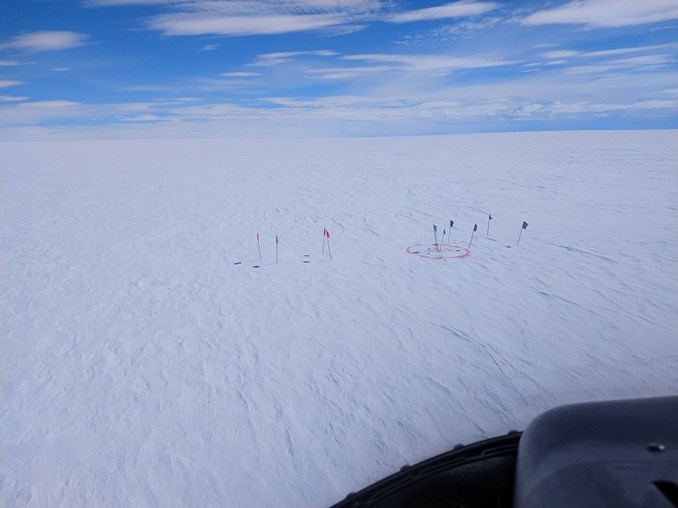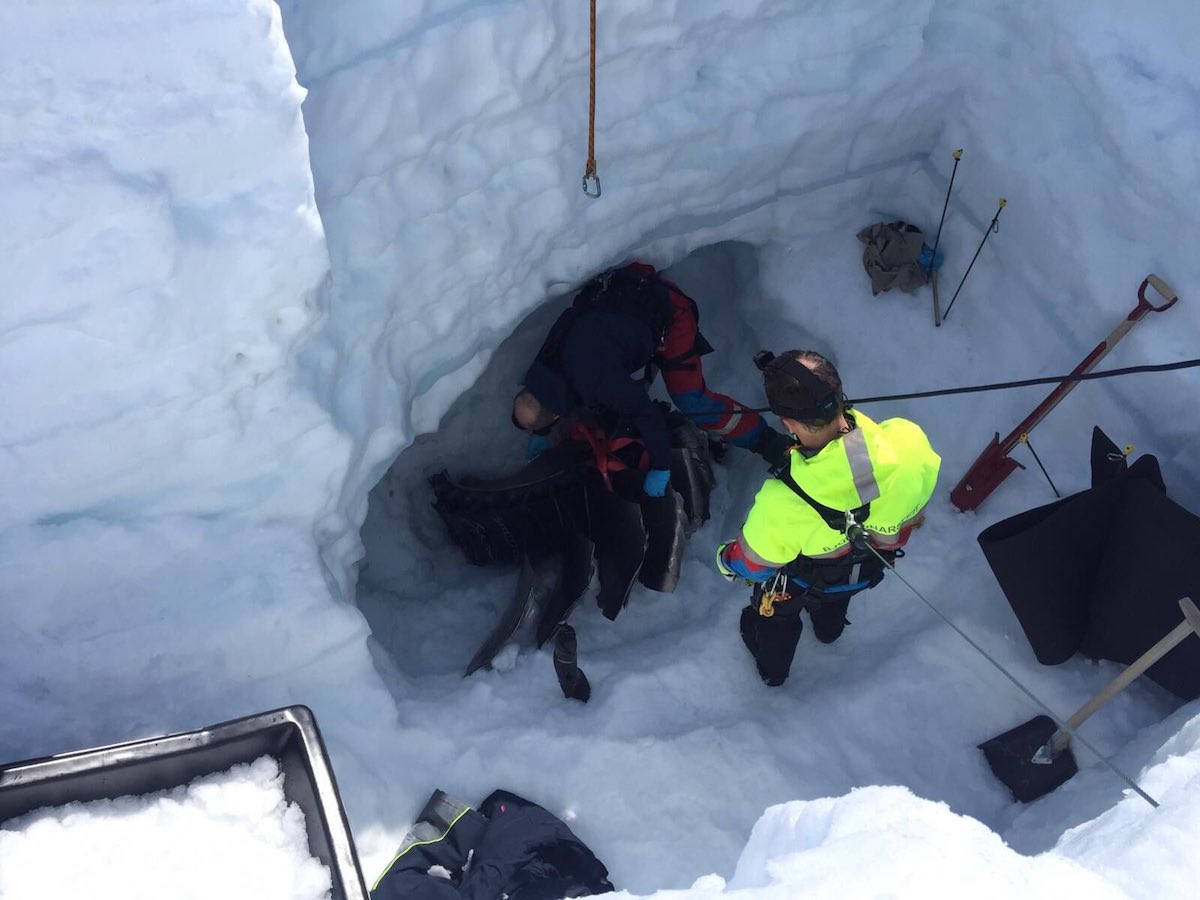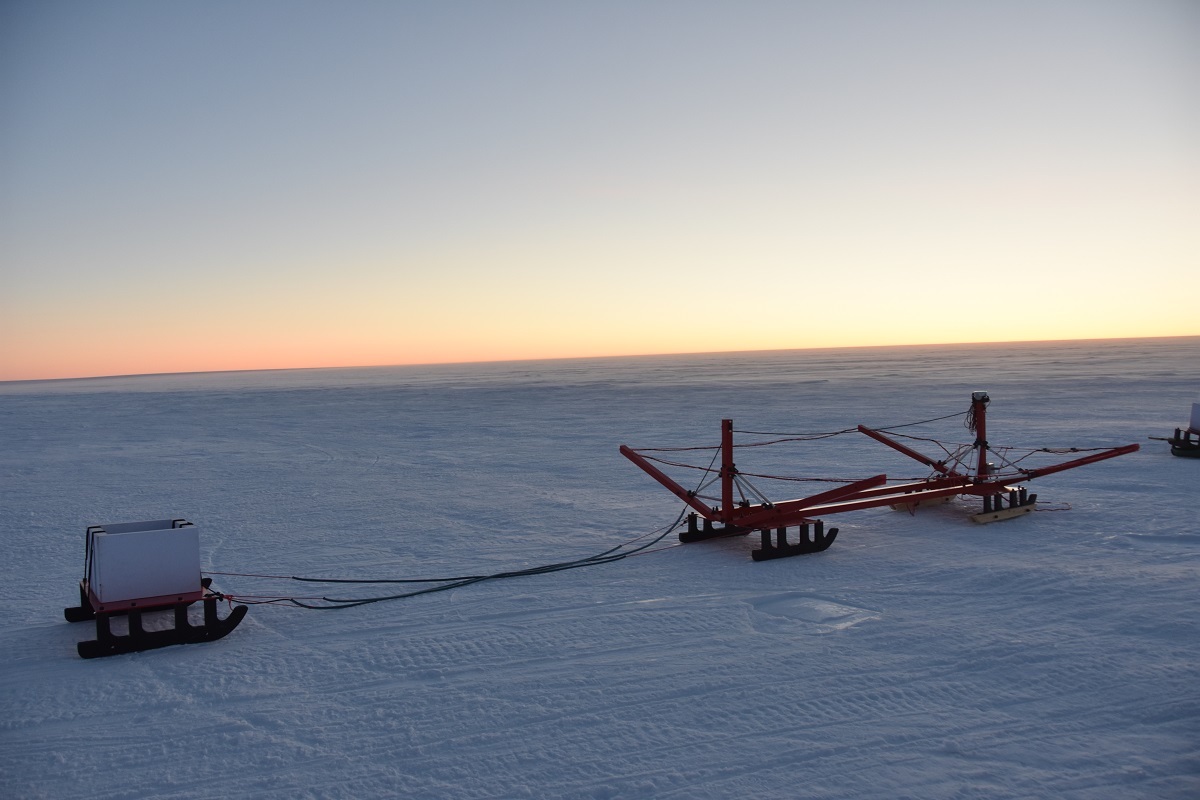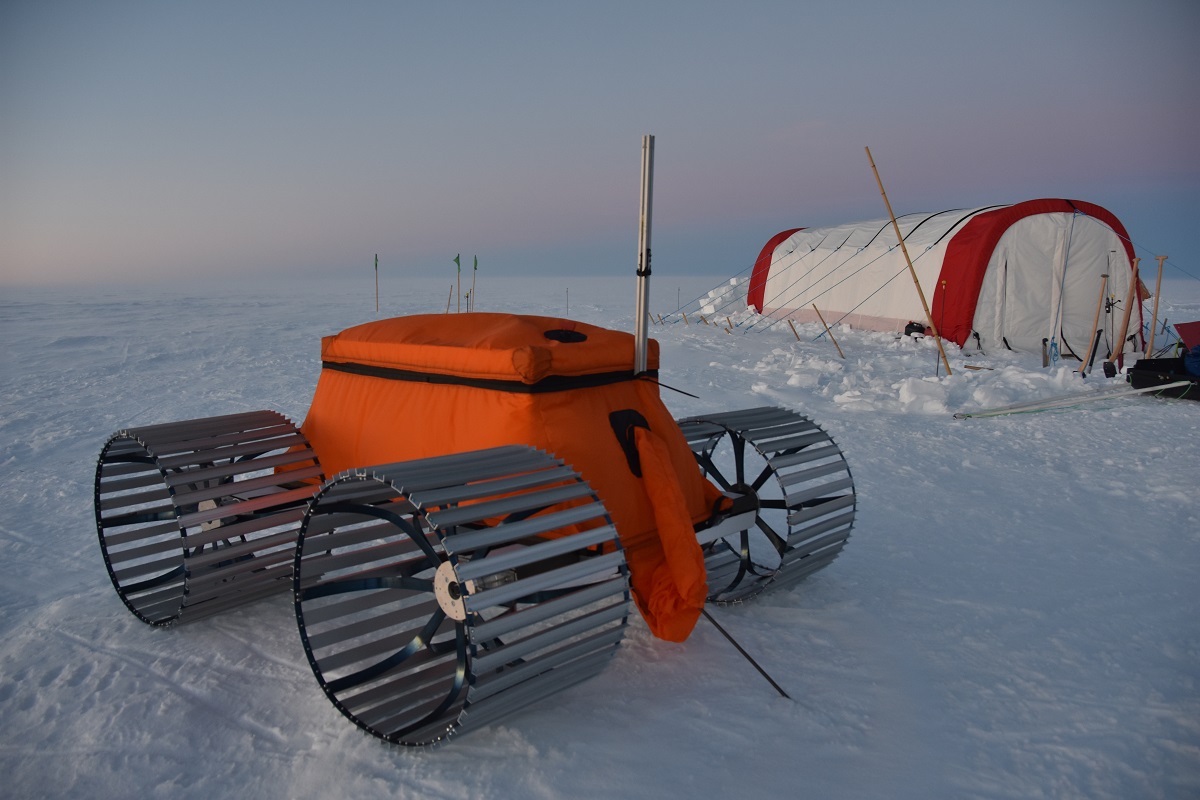Investigators recover an engine piece from a 2017 Air France incident from beneath Greenland ice
Searchers used a robot and modified radar to help them reach part of an Air France engine buried under two years of snow and ice.
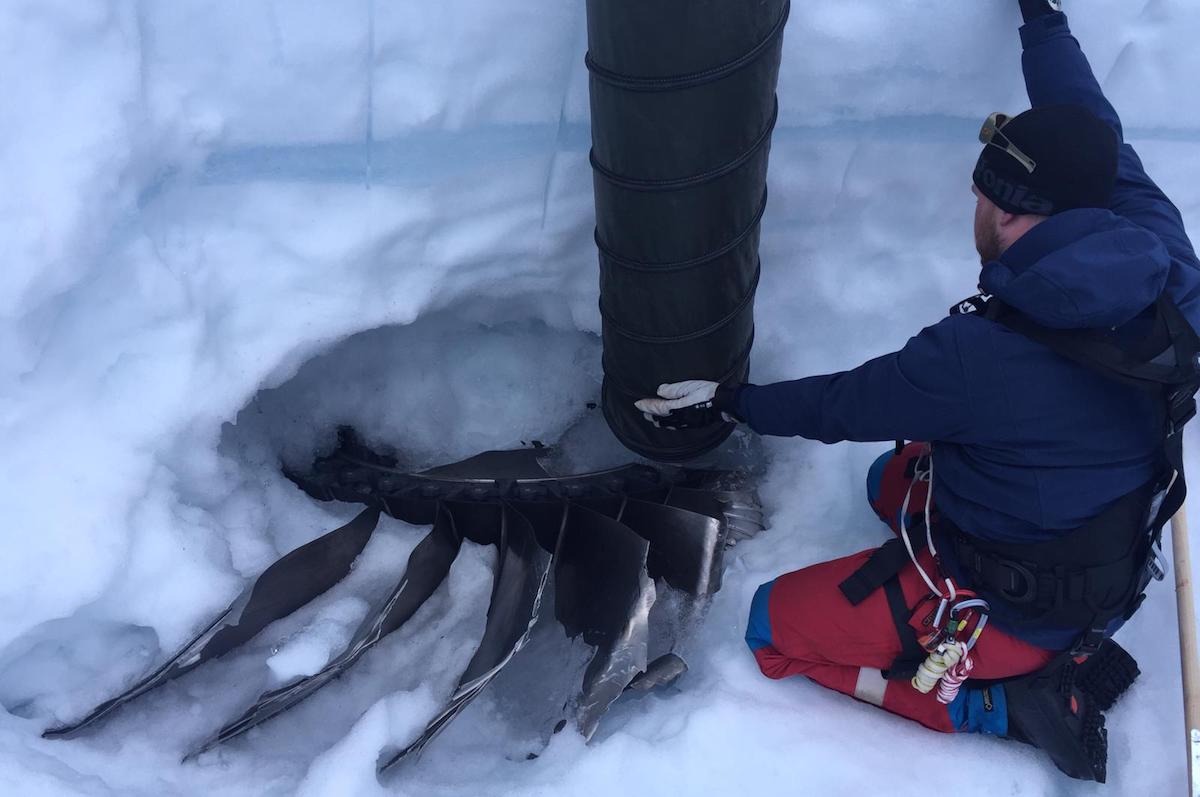
An international team of investigators has recovered part of an Air France jet engine buried 13 feet (four meters) beneath the surface the Greenland ice cap after it was lost over the country two years ago.
Air France flight AF 66 was en route from Paris to Los Angeles on September 30, 2017, when one of the Airbus A380’s four engines malfunctioned as it approached Greenland’s western coast.
Passengers described hearing a “loud boom” and then seeing the engine’s covering disintegrate after what is believed to have been a fan failure. The exposed fan and inlet then separated from the engine itself, which remained attached to the wing.
No one in the air or on the ground was injured incident, and the plane, carrying 496 passengers or 24 crew members, was able to land safely two hours later at Goose Bay, in Newfoundland and Labrador, Canada.
Nice looking engine vs. Bad looking engine #AF66 pic.twitter.com/DgXo5HOsPe
— Tomáš Richtr (@TomRichtrF1) September 30, 2017
Recovering the lost part is important, since it provides key information about the cause of the failure. Initially, it seemed likely investigators would be able to recover the debris quickly. Using the information from the plane’s flight-data recorder, France’s BEA, which investigates civil-aviation accidents, was able to identify a 5.4-square-mile (14-square-kilometer) impact zone, some 95 miles (150 kilometers) southeast of the town of Paamiut. A helicopter flying over the area was then able to locate the 330-pound (150 kilogram) titanium fan and shaft.
Inclement weather, however, prevented investigators from recovering the debris before winter, and by the time the search was able to resume in 2018 the parts had been covered by snow.
Over the next two years, investigators were to return to Greenland four times, spending a total of 13 weeks searching for the location of the parts using aircraft-mounted radar. At the same time, investigators conducted a ground search to recover parts located during the initial aerial search. In addition, to providing information about where the fan might be, the ground search used ground-penetrating radars in the event the second aerial search was unsuccessful.
Eventually, parts of the fan were located in a crevasse field. To approach the area, searchers from Denmark, Iceland, France and the Netherlands needed to navigate cracks in the ice measuring as much as 90 feet (30m) across, with one as close as 6 feet (2 meters) from the part. In order to work safely in the crevasse field and confirm the location of the fan, the team used a modified version of equipment normally used to search for groundwater, as well as a robotic platform that, despite weighing nearly 450 pounds (200 kilograms), exerts only minimal pressure on the ground below.
Once the part was identified, located and confirmed, the team, working a small island of solid ice in the middle of the crevasse field, spent two days extracting it. Working around the clock in temperatures as cold as minus 31 degrees Fahrenheit (minus 35 degrees Celsius), the team used chainsaws, shovels and a heater to dig down to and melt the part out of the ice before lifting to the surface with an electric hoist.
It will now be sent to the U.S. were a private firm will seek to identify the cause of the failure.
Correction: An earlier version of this article mistakenly identified the airport where the stricken plane landed, Goose Bay, as being in the Territory of Nunavut. It is in the province of Newfoundland and Labrador. This article has been updated to correct this.
